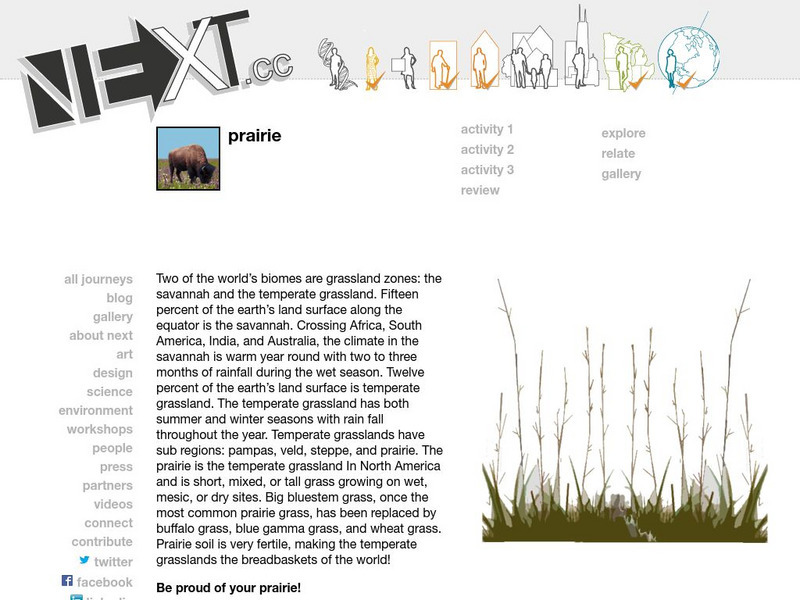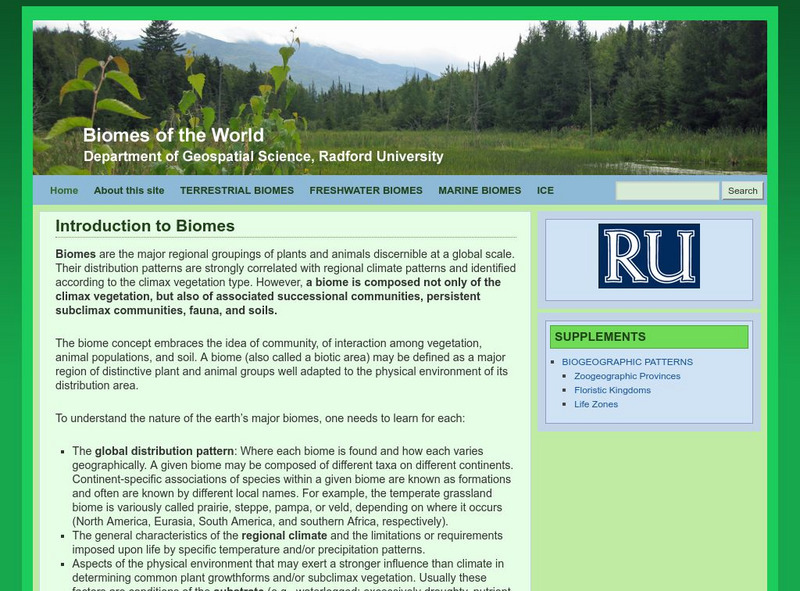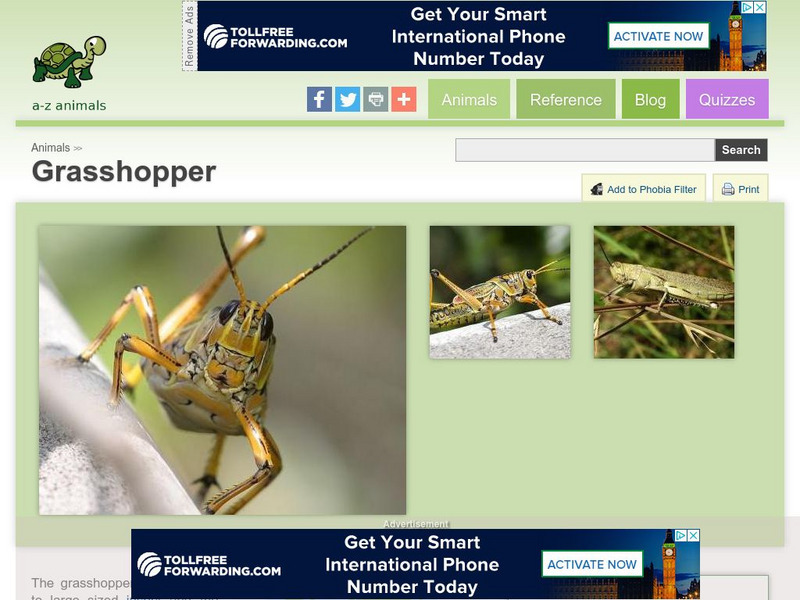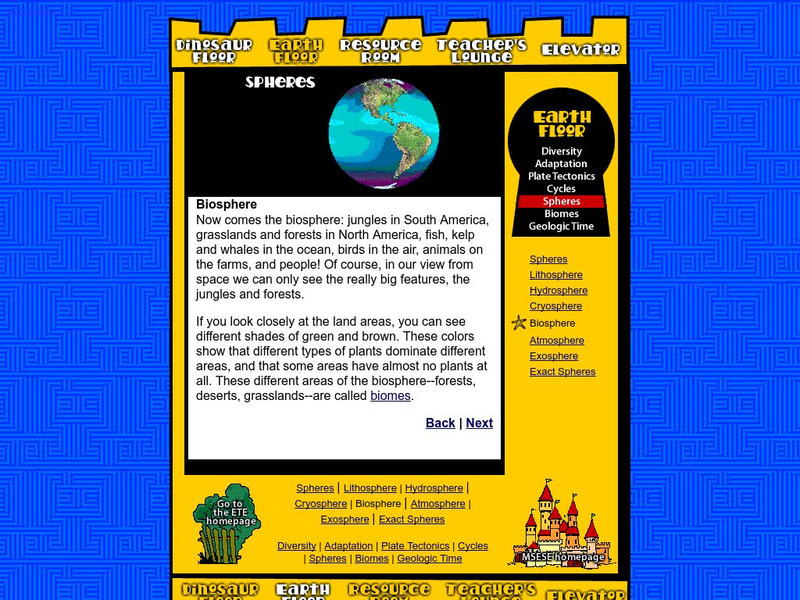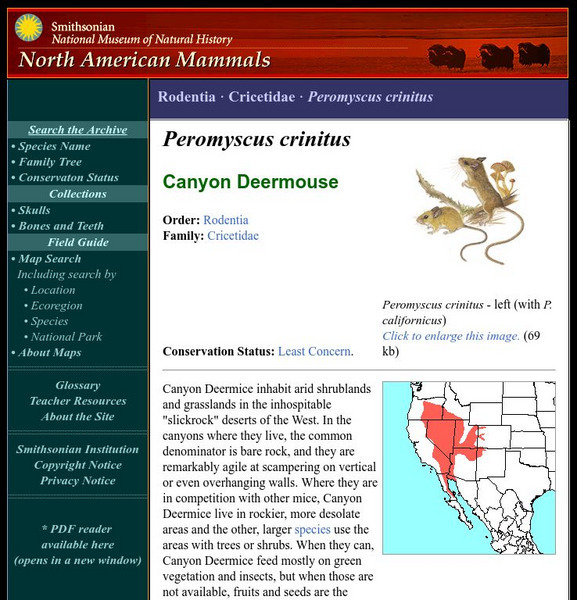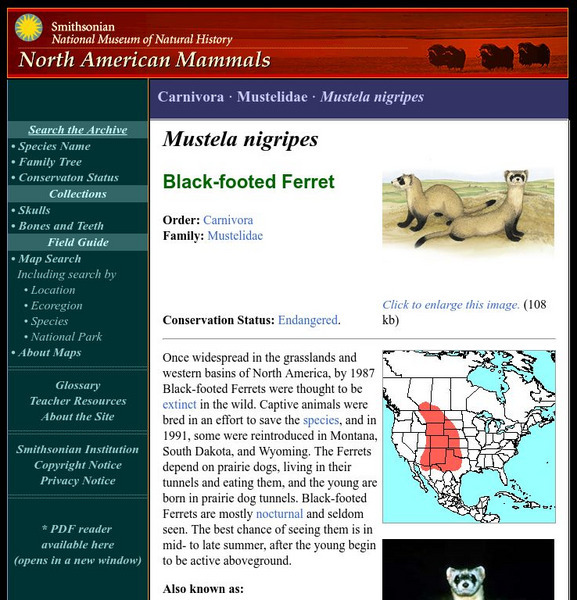Next.cc
Next: Prairie
Complete these three activities to learn about prairies and where they are located. Includes links to explore related material.
Alberta Online Encyclopedia
Alberta Online Encyclopedia: Natural Regions of Alberta
Using a colorful interactive map of Alberta, you can learn about the geographic regions of the province. Facts and photos of each region are included.
Encyclopedia of Earth
Encyclopedia of Earth: Terrestrial Biome
Gives short descriptions of the many different types of biomes found on land all over the world. (Updated: February 22, 2013)
Other
Introduction to Biomes
This site provides an introduction to biomes. There are also links to each different type of biome.
PBS
Nh Pbs: Nature Works: Black Tailed Prairie Dog
Discover more about the Black-tailed Prairie Dog through this educational resource. This site features information on reproduction, habitat, range, diet and more.
A-Z Animals
A Z Animals: Animal Facts: Grasshopper (Caelifera)
This entry identifies the defining characteristics of Caelifera, more commonly known as the grasshopper.
Cornell Lab of Ornithology
Habitat Network: Native Grasses for Your Native Lawn
Find out how to use native grasses to increase wildlife diversity in a backyard.
Cornell Lab of Ornithology
Habitat Network: Native Lawn Ftw! (For the Win)
Find out about the advantages of planting native grasses in a lawn.
Canadian Museum of Nature
Canadian Museum of Nature: Arctic Ground Squirrel
The Canadian Museum of Nature provides characteristics of the Arctic Ground Squirrel.
Lincoln Park Zoo
Lincoln Park Zoo: African Lion
A wonderful research tool for gathering information about the African Lion. Information that is given includes what it looks like, what it eats, where it lives, its life history. Additional information included is about its special...
African Wildlife Foundation
African Wildlife Foundation: Lion
This resource takes an exploratory look at the lion. Content includes information on this animal's physical characteristics, habitat, behavior, diet, caring for the young, predators, and more.
Center for Educational Technologies
Nasa: Classroom of the Future: Spheres: Biosphere
Use this site to learn about the different areas of the biosphere, known as biomes.
Scholastic
Scholastic: Study Jams! Science: Ecosystems: Biomes
A video and a short multiple-choice quiz on the topic of biomes, and the six different types that are found on Earth.
Alabama Learning Exchange
Alex: Beginner's Avl (Alabama Virtual Library)
Learners will research the red fox using an online encyclopedia from the Alabama Virtual Library web site and answer questions provided by the teacher. This is a good lesson for students' first experience in using the AVL.
Smithsonian Institution
National Museum of Natural History: American Mammals: Southwestern Myotis
Southwestern myotis live in a variety of southwestern mountain habitats, from desert grasslands up into pine and mixed coniferous forest in the United States, and in desert and grassland in Mexico. These bats and two other myotis...
Smithsonian Institution
National Museum of Natural History: American Mammals: Ord's Kangaroo Rat
By occupying the short grass prairie of the Great Plains, and a variety of habitats where there are fine-textured, sandy soils, Ord's Kangaroo Rat has managed a truly enormous geographic distribution. The varied habitats that it occupies...
Canadian Museum of Nature
Canadian Museum of Nature: Bactrian Camel
Bactrian camels are found wild in the Gobi Desert, and in the grasslands of China and Mongolia. Details about this animal can be found here along with photos.
Other
David Ward
David Ward is a Canadian author of novels for junior and intermediate students. In some of his novels he creates imaginary worlds, such as in his trilogy about a place called Grassland. This is his website where you will find a biography...
Nature Canada
Nature Canada: Suffield National Wildlife Area: Mammals at Risk
Ord's Kangaroo Rat and Western Harvest Mouse are two prairie mammals that are being affected by the erosion of their habitats. The proposed drilling of gas wells in Alberta and the loss of prairie grasslands to agriculture are factors...
Ducksters
Ducksters: Science for Kids: Tundra Biome
Kids learn about the tundra grasslands biome. This cold and dry ecosystem is located far to the north.
Smithsonian Institution
National Museum of Natural History: American Mammals: Canyon Deermouse
Canyon Deermice inhabit arid shrublands and grasslands in the inhospitable "slickrock" deserts of the West. In the canyons where they live, the common denominator is bare rock, and they are remarkably agile at scampering on vertical or...
Smithsonian Institution
National Museum of Natural History: American Mammals: Black Footed Ferret
Once widespread in the grasslands and western basins of North America, by 1987 Black-footed Ferrets were thought to be extinct in the wild. Captive animals were bred in an effort to save the species, and in 1991, some were reintroduced...
Smithsonian Institution
National Museum of Natural History: American Mammals: Silver Haired Bat
Somewhat resembling the larger hoary bat, the silver-haired bat has frosted tips on the black or dark-brown fur of its back. Silver-haired bats occur in both grassland and forest and are abundant in old-growth forest. Learn more about...
